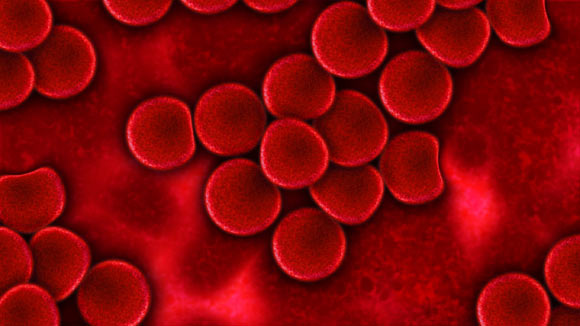
Blood groups are complex. The two best known blood group systems are ABO and Rh. Within each blood group, red cells can carry surface markers called antigens. For example, within the ABO blood group system, there are the A and B antigens — people with A have the A antigen, people with B have the B antigen, people with AB blood have both and people with O have neither. There are now 47 recognized blood group systems together containing more than 360 recognized blood antigens. New research led by NHS Blood and Transplant scientists establishes a new blood group system, MAL, as home to the AnWj antigen, which was discovered in 1972 but its genetic background was unknown until now. The new discovery allows identification and treatment of rare patients lacking this blood group.

There are now 47 blood group systems together containing more than 360 blood antigens. Image credit: Gerd Altmann.
“The genetic background of AnWj has been a mystery for more than 50 years, and one which I personally have been trying to resolve for almost 20 years of my career,” said Dr. Louise Tilley of NHS Blood and Transplant.
“It represents a huge achievement, and the culmination of a long team effort, to finally establish this new blood group system and be able to offer the best care to rare, but important, patients.”
Some people can lack the MAL blood group due to the effect of illness, but the rare inherited form of the AnWj-negative phenotype has only been found in a handful of individuals.
If people who are AnWj-negative receive AnWj-positive blood they could have a transfusion reaction, and this research allows development of new genotyping tests for detecting such rare individuals and reducing the risk of transfusion-associated complications.
Dr. Tilley and colleagues established that AnWj is carried on the Mal protein.
More than 99.9% of people are AnWj-positive, and such individuals were shown to express full-length Mal protein on their red cells, which was not present on the cells of AnWj-negative individuals.
The researchers identified homozygous deletions in the MAL gene associated with the inherited AnWj-negative phenotype.
The most common reason for being AnWj-negative is due to suffering from a hematological disorder or some types of cancer which suppress antigen expression.
Only a very small number of people are AnWj-negative due to a genetic cause. There were five genetically AnWj negative individuals in the study including a family of Arab-Israelis.
The blood tested included a sample given by a lady in 2015 who was the first AnWj negative person to be discovered in the 1970s.
The scientists used whole exome sequencing — the genetic sequencing of all DNA that encodes proteins — to show that these rare inherited cases were caused by homozygous DNA sequence deletions in the MAL gene, which codes for Mal protein.
Proof that Mal is responsible for binding of AnWj antibodies isolated from these rare patients was provided by experiments showing the appearance of specific reactivity with cells in which researchers introduced the normal MAL gene but not the mutant gene.
“It’s really exciting we were able use our ability to manipulate gene expression in the developing blood cells to help confirm the identity of the AnWj blood group, which has been an outstanding puzzle for half a century,” said University of Bristol’s Professor Ash Toye.
“This development will help identify these rare donors and help patients in the future.”
“Resolving the genetic basis for AnWj has been one of our most challenging projects,” said Dr. Nicole Thornton of NHS Blood and Transplant.
“There is so much work that goes into proving that a gene does actually encode a blood group antigen, but it is what we are passionate about, making these discoveries for the benefit of rare patients around the world.”
“Now genotyping tests can be designed to identify genetically AnWj-negative patients and donors. Such tests can be added to the existing genotyping platforms.”
“Mal is a very small protein with some interesting properties which made it difficult to identify and meant we needed to pursue multiple lines of investigation to accumulate the proof we needed to establish this blood group system,” said Dr. Tim Satchwell of UWE Bristol.
“Being able to combine our expertise to finally achieve this has brought the whole team a lot of satisfaction.”
The findings were published in the journal Blood.
_____
Louise A. Tilley et al. 2024. Deletions in the MAL gene result in loss of Mal protein, defining the rare inherited AnWj-negative blood group phenotype. Blood 025099; doi: 10.1182/blood.2024025099
This article is based on a press-release from the University of Bristol.
 Print
Print


